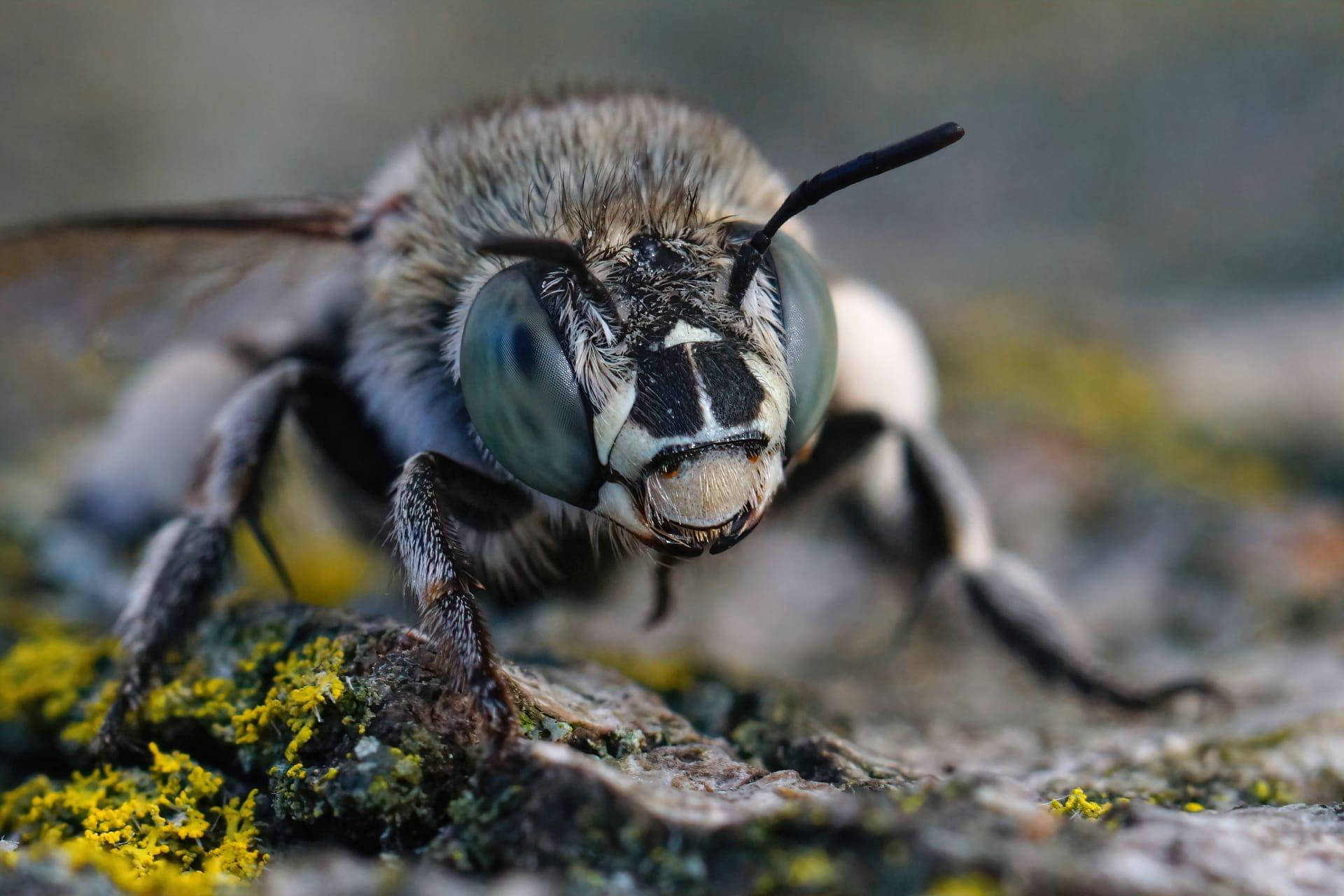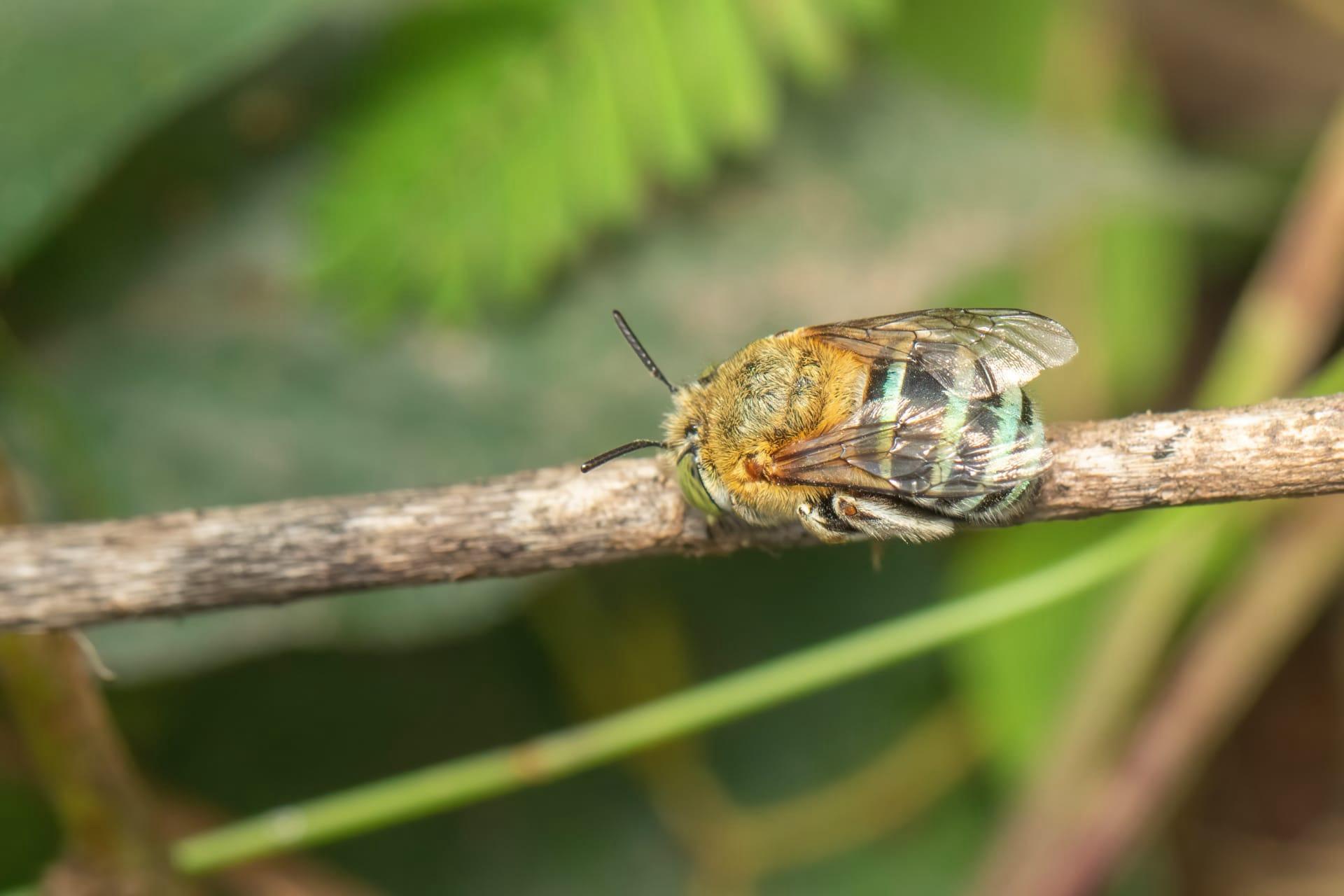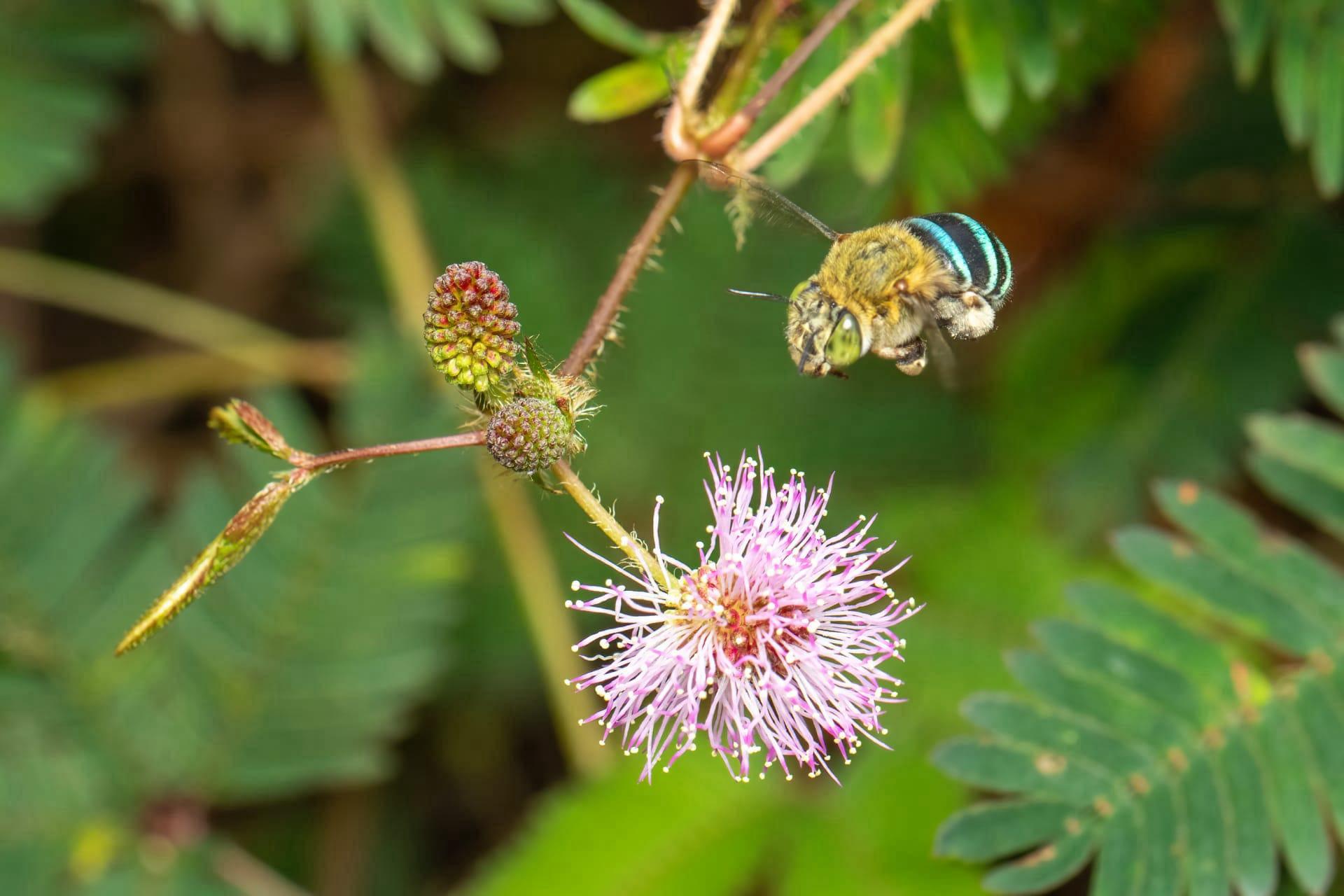Blue Banded Bee Characteristics
- Home /
- Mini Encyclopedia /
- Animal /
- Blue Banded Bee Characteristics
1
The Blue Banded Bee, known for its striking blue stripes, is a small but fascinating creature. Typically, they measure about 11 millimeters in length, a size that allows them to adeptly navigate through various flowers. Their lifespan, although short, is intriguing. In the wild, these bees usually live for about 40 days, a brief but vibrant life cycle dedicated to pollination and reproduction.
One of the most remarkable organs of the Blue Banded Bee is its jaws. Unlike other bees, their jaws are elongated and powerful, serving a unique purpose. These specialized jaws are not just for feeding but play a crucial role in their nesting behavior. The Blue Banded Bee uses its strong jaws to shape and smooth the walls of its nest, a task essential for the safety and development of their offspring.

2
Question: How does the Blue Banded Bee contribute to plant pollination differently from other bees?
Answer: The Blue Banded Bee employs a unique technique called 'buzz pollination' to pollinate plants. Unlike other bees that collect pollen passively from their bodies, the Blue Banded Bee can vibrate its flight muscles at a high frequency without moving its wings. This vibration shakes the pollen loose from certain types of flowers, particularly those with tubular anthers, ensuring effective pollination. This method is not only efficient but also crucial for the reproduction of many flowering plants that other bees cannot pollinate.

3
The Blue Banded Bee exhibits distinctive movement characteristics. Known for their swift and agile flight, these bees are capable of hovering in place, a skill not common in all bee species. This ability allows them to access nectar from a diverse range of flowers, some of which are difficult to reach for other pollinators.
In terms of feeding habits, Blue Banded Bees are selective and tend to favor certain flowers, particularly those that allow for buzz pollination. They consume both nectar and pollen, the former for energy and the latter for protein. Their preference for specific flowers ensures that they play a vital role in the ecosystem, pollinating plants that other species may overlook.

4
The Blue Banded Bee thrives in various environments, ranging from urban areas to open woodlands and coastal regions. They are commonly found in Australia, Papua New Guinea, and parts of Indonesia. Adaptability is a key trait, allowing them to nest in a variety of locations, including hollow twigs and even burrows in the ground.
Reproduction-wise, the Blue Banded Bee is solitary. Females construct and manage their nests alone, typically laying one egg per cell. They mix pollen and nectar to create a food source for the larvae, a practice that ensures the young have immediate nourishment upon hatching. After laying eggs, the female seals each cell for protection, showcasing a strong instinct for nurturing their offspring.

5
Book: "The Buzz about Bees: Biology of a Superorganism" by Jürgen Tautz provides an in-depth look at bee biology, with a section dedicated to species like the Blue Banded Bee. Published in Germany, this book, though not exclusively about the Blue Banded Bee, offers valuable insights into their world.
Book: "Australian Native Bees" by Tim Heard is a comprehensive guide on native bees of Australia, including the Blue Banded Bee. This book, rich in detail and written by an Australian entomologist, delves into the unique behaviors and characteristics of these bees, making it a vital resource for understanding these fascinating creatures.